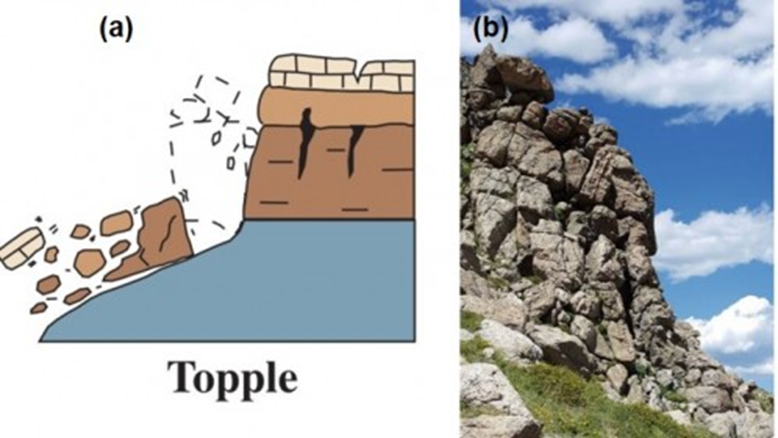Slopes are integral components of both natural landscapes and human-made constructions. However, slope stability can be compromised, leading to slope movements or landslides that pose significant risks to infrastructure and human lives. In this blog post, we will delve into the world of slope stability, exploring the causes of slope failures, different types of landslide movements, and the methods employed to assess and mitigate slope instability.
Causes of Slope Failures:
Slope failures can be attributed to various natural and human-induced factors. Natural causes include gravitational forces, water saturation, erosion, seismic activity, changes in aquifer levels, volcanic eruptions, and freeze-thaw weathering cycles.
On the other hand, human-induced causes encompass activities such as toe excavations, infrastructure loads, machine vibrations, construction of weak embankments or earth dams, and deforestation, which can exacerbate slope instability.
Types of Landslide Movements:
Landslide movements can be categorized into different types based on their characteristics and behavior. Understanding these types is essential for assessing slope stability and implementing appropriate mitigation measures. Here are the main types of landslide movements:
Falls: Falls are rapid downward movements that occur
without warning. They happen when a rocky mass detaches from a slope along a
discontinuity plane associated with fractures, joints, or bedding.
Topples: Topples are failures that resemble falls but involve rotational movement around a point located in a relatively low position. They commonly occur in rocky materials.
Slides: Slides refer to ground movements along a
specified surface or zone of weakness. They occur when shear stress overcomes
the shear strength along a surface. There are two main types: rotational slides
and translational slides.
Lateral Spreads: Lateral spreads are deformational
phenomena caused by liquefaction. They occur when saturated soil, usually
sands, experiences a loss of strength due to sudden changes in stress
conditions.
Flows: Flows can be slow or fast-moving and take
different forms. In rocks, slow movements can result in folding or bending. In
soils, there are various types, including debris flows, debris avalanches,
earthflows, mudflows, and creep.
Understanding Slope Stability:
Slope stability is governed by two key factors: driving forces and resisting forces. Driving forces tend to destabilize slopes, while resisting forces work to counteract these destabilizing effects. Driving forces are influenced by factors such as slope inclination, unit weight of the ground, and slope height. Resisting forces, on the other hand, depend on the shear strength of the soil or rock materials, the presence of discontinuity planes, and any additional stabilizing forces, such as buttresses.
Factor of Safety and Slope Stability Methods:
The Factor of Safety (FoS) is a critical parameter used to assess slope stability. It is defined as the ratio of resisting forces to driving forces. If the FoS is less than 1, the slope is unstable, and landslides are likely to occur. FoS values slightly above 1 indicate a relatively stable slope, but external factors such as earthquakes can temporarily increase driving forces or reduce resisting forces, potentially leading to landsliding. Generally, an FoS higher than 2 indicates a stable slope with a lower risk of instability.
To analyze and mitigate slope stability issues, engineers employ various methods, including empirical approaches, limit equilibrium methods, finite element analysis, finite difference methods, and discrete element analysis. One widely used method is the method of slices, which was introduced by W. Fellenius. This method involves dividing the soil mass above the assumed failure surface into vertical columns, or slices, and ensuring force and moment equilibrium for each slice. The method of slices considers shear strength criteria, typically employing the Mohr-Coulomb criterion, and involves solving a set of equilibrium equations.
Conclusion:
Understanding slope stability is crucial for civil engineers and professionals involved in geotechnical engineering. By comprehending the causes of slope failures, types of landslide movements, and employing effective slope stability analysis methods, engineers can design and construct infrastructure projects that minimize the risks associated with slope instability. By considering factors such as driving forces, resisting forces, and the critical Factor of Safety, engineers can make informed decisions and implement appropriate measures to ensure slope stability and mitigate the potential for landslides.Remember, slope stability analysis should be conducted for both natural and artificial slopes to ensure the safety and longevity of our infrastructure projects. By prioritizing slope stability in engineering practices, we can protect lives, prevent infrastructure damage, and create sustainable environments for future generations.
.png)










.png)
.png)

0 Comments